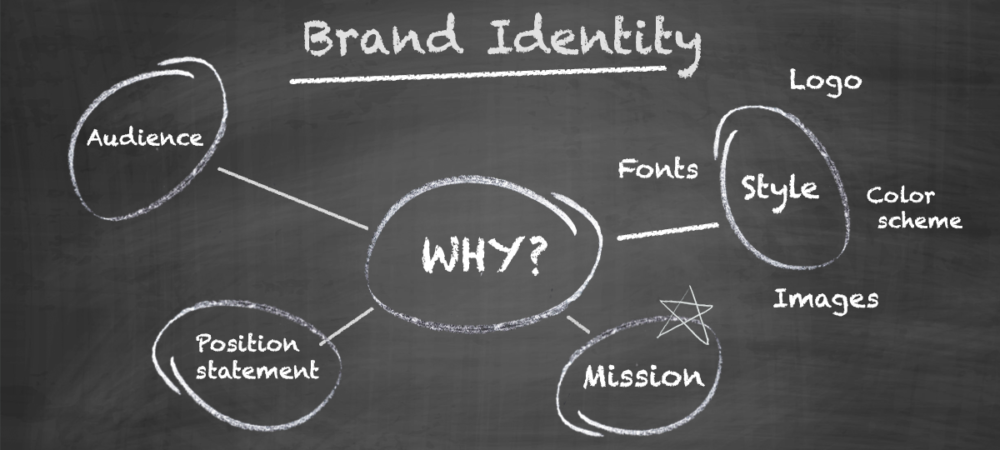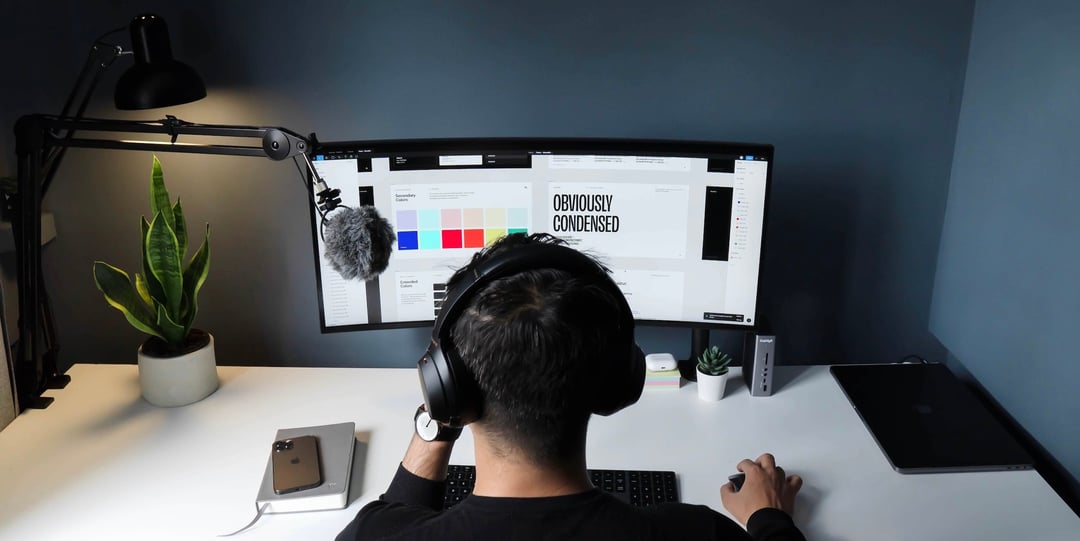
Brand Identity Kit: What it is and How to Attain it
By Austin LaRoche, ATAK Interactive CEO
“People don’t care what you do, they care why you do it.” – Simon Sinek
To have a compelling brand identity, you must first understand and articulate why you do what you do. What drives you to get out of bed every morning and tackle what’s ahead? When you wake up in the middle of the night with the next great idea to push your vision forward, why do you become so excited you can’t go back to sleep? Your “why” is the core around which all the elements of your brand identity should revolve and relate back to.
Defining Elements of a Brand Identity Kit
Let’s start with defining Brand Identity. And like the title of Sinek’s book, let’s “start with Why.”
Mission. Your mission statement is an exposition of why your company exists, why you do what you do. What drives you to do what you do? Is it a need to push boundaries in the industry? Is it to inspire change in the world? Is it to continuously rise above the expectations of your target market through constant innovation?
Your mission statement is your “why.” Without it, your brand identity will never be one that appeals to customers time and time again.
Position Statement. A positions statement consists of a few sentences that articulate the values in your product or service to your target market, within the realm of your competitors. Let’s break this down.
First, simply state what you’re offering. Ex. “We provide ____”
Second, identify your target market. To whom are you selling these products/service? Or rather, whom do you hope to sell to? There can oftentimes be a considerable difference between the two, but remember that in order for your business to be what you want it to be, you must always be targeting your ideal customer. Figure out what they look for when they’re shopping and adjust your product or services accordingly.
Third, consider your competition. Reviewing your competitors helps you figure out who you’re up against in the industry. You might sell similar products, but through a competitor analysis, you’ll be able to pinpoint an aspect of your product offering that makes yours more desirable.
Here is your value proposition. Why should your target market buy your products and not a competitor’s? Is because they’re thrifty and you offer the best price? Do they value cutting edge design or superior quality material? Do they value the name and reputation of your brand? Capitalize on what your customers value most and make it clear that that is exactly what your company offers.
Those were just the core elements of your business. Now, let’s move onto considering your style elements. Style elements of brand identity add up to make your brand identity what it is to the public. These are concrete, customer-facing elements that ideally, should communicate the abstract values of your company that were defined above.
Keeping these vital elements well-organized in a handbook helps you clearly communicate the standards by which they can to be used—helpful for your design team, or anyone else that may be producing your business’ branded materials.
Style Elements of a Brand Identity Kit
Logo
A logo is a symbol that is essentially your business’ face to the world. Being so, it must reflect your “why.” We know, capturing your company’s values, culture, and mission through a small symbol seems like an elusive task, but all the small parts that make up your logo (font, color, imagery if any) can be fine-tuned to get the job done. Consider ATAK’s logo—black and white, simple font, clean lines. It reflects who we are, and that’s direct, no bs, ready to get down to business.
Your logo could either be a graphic symbol, a word mark, or a pairing of both. Some companies have done extremely well with a logo that’s just a word mark (think Coca-Cola), and these logos are often cheaper and easier to formulate. In any case, the ways in which your logo can and cannot be used should be clearly defined in your brand identity kit.
Have a standard for spacing around your logo so that it never appears too closely to another image as this could take away from its impact. In addition to its original dimensions, render your logo in a variety of orientations so that it still shines when used on different platforms or promotional items.
Colors
The colors of your company play an important role in building the desired reputation you want for your brand. Factors like individual experiences and cultural differences make it difficult for us to make broad statements such as “yellow means happy!” but research has found that the appropriateness of a color in relation to a brand makes a difference in how the brand is perceived. In other words, are your colors appropriate to what you’re selling? Do they effectively communicate your brand personality and values?
Once you have these questions answered, figure out your brand colors’ hex code, Pantone colors, CMYK, and RBG colors and give these a section in your brand identity kit. This goes for both your primary colors (usually appears in your logo) and your secondary colors that support and complement them. With the case of secondary colors, it’s helpful to communicate how and where they can be used.
Typography
The typeface in your company’s communications provides another opportunity to build consistency in your brand identity. Choose a font that looks good in various sizes and weights, and not too decorative to serve in important correspondence.
Keep in mind that not all programs and computers could be compatible with the font you’ve chosen. If you’re producing your marketing materials in-house, make sure that those fonts are available on all of the systems that produce these materials. If you’re handing your marketing efforts over to an agency, be sure to provide a location for where these fonts can be downloaded. If the font that you’ve chosen exists on Mac but not PC or vice versa, be sure to choose an alternative that works to the same effect.
Identity Elements to Consider
Other smaller elements within the company are worth considering as they still have a large bearing on creating a unified brand image. Having a company-wide convention on email signatures helps further a company persona, especially since emails are public facing. The formatting, colors and logo placement (if any) should be clearly communicated to your employees when they come onboard. Here at ATAK, we encourage our team members to place a quote in their signature in which they find drive and meaning. Similarly, company headshots should follow a strict convention—what is the dress code, background, color scheme, etc.?
Have guidelines on how your company speaks. What kind of tone do you want your company to take on in its copy and outside communications? The tone should reflect your company’s values defined in your mission and position statement. Is the company voice exciting, friendly, silly, or direct and straightforward? Have a guideline on how copy should be used helps keep your company voice consistent across all platforms of communications.
For help in getting started, Here’s how we ATAK brand identity.
All the elements of your brand identity add up to how you’re perceived by the world. Remember that a brand identity kit is nothing if it doesn’t circle back to you mission statement—your “why.” Thus, each part should be carefully deliberated so that they go back in support of that one unifying message. A brand identity kit helps keep these elements clearly defined and accessible to anyone who may have a hand in your business’ marketing efforts.
Related Posts

Marketing Strategy Agency Derivatives and Growth Unlocked
Marketing is an essential aspect of any business. It can help increase brand awareness, attract new customers, and drive sales. However, developing an…

Boosting ROI: Benefits of Hiring a Marketing Strategy Agency
Are you looking for ways to enhance your marketing strategy and increase your returns? Look no further than Derivatives, a top-tier marketing strategy…

The Top AI-Powered Tools You Need to Know About Graphic Design
Artificial intelligence (AI) has become a game-changer for many industries, including graphic design. AI graphic design tools utilize machine learning and…